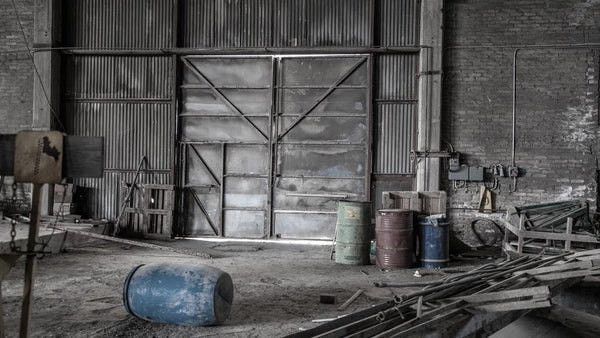Carbidizing 101

What is Carbidizing?
(And what are the advantages of a Carbidized knife?)
The Carbidizing process deposits a thin layer of (usually) Tungsten or Titanium carbide - an ultra hard material - to the surface and impregnated into the surface of another softer metal like Titanium or Steel. We use Tungsten carbide on our designs and will refer to that as the prime example of carbidizing materials.
The process of carbidizing adds a layer of hard armor to otherwise softer metal parts. It's done on machinery/parts/lockfaces to make them more difficult to wear down, and is also added to some knife blades (only on one side of the blade as we explain below...) to make them more wear-resistant and potentially even "self-sharpening."
A carbide layer is often added on Titanium parts and blades since Ti is lighter than steel and stronger by weight than steel, it is generally not as hard as steel. Adding a layer of Tungsten carbide to one side of a Ti blade gives the sharp edge of a blade a harder back-stop, which helps maximize the sharpness of the edge overall.

The Science of Carbidized Knives (sort of)
Tungsten carbide falls just under diamond on the Mohs scale, meaning if you wanted to polish or finish Tungsten carbide, you would most likely use a diamond coated tool to do it. It would be very brittle as a full blade, but very durable as a blade coating.
When applying carbidizing, you essentially weld a thin layer of carbide to the surface and impregnated INTO the surface of the metal you are applying it to. There are several manufacturers of tools to do this, and the tools or their settings will change how deep the carbide is impregnated into the surface.
This is different from how a ceramic coating is applied. They are typically sprayed on and then baked on, but they are ON and not IN the metal they are applied to. Ceramic coatings are tough cosmetic coatings, but they don't necessarily make the object they are applied to functionally different.
Carbidizing creates a hard shell of metal on the surface you coat in it.
Advantages of a Carbidized Blade
- It is a hardened "back stop" aka "self-sharpening" on a blade - if you are creating a knife blade out of Titanium, applying carbidizing to one side of the blade edge creates a hard back-stop when sharpening the other side of the blade. This is especially helpful on chisel ground blades where one side is flat and the other is angled down to the edge. Carbidizing is applied to the flat side along the edge, allowing a toothy edge (without burr) to be formed when the angled side is sharpened. As the blade is used, the carbidized side will remain unchanged, and the softer side will be worn away, resulting in a "self-sharpening" effect. Does it really work? Yes, but not to a magical level from what we have personally experienced.

- Better wearability - if you have a metal part that is repeatedly in contact with another metal part, carbidizing should help prolong the life of the parts in contact. This could be used on a liner-lock/frame-lock in a folding knife, particularly if the lock is Titanium. Likewise, it can be used as a general coating for tools to prolong their lifespan without being worn down, as we do on our Up-Armoured B•A•T Coins.
- Non-corrosive - before carbidizing one of our personal chef knives, we wanted to test the corrosiveness of a Tungsten Carbide coating. Two weeks cycling between pure apple cider vinegar, lemon juice, mustard, salt water and tap water and... nothing. We would post before and after pics, but they are identical. Tungsten carbide coatings are good to go on corrosiveness.
- Looks cool - functionally speaking, a 1/8" to 1/4" wide line of carbide deposited to the side of a blade adjacent to the edge is sufficient, but why stop there? We've created Nami (wave) hamon-like patterns with carbidizing and even used it in purely decorative ways (shown below as loops on the top blade). Both knives are Titanium Grade 5.

- Added value - as a knife or tool-maker, carbidizing an edge is an additional feature with a purpose. All of our Titanium piercers and blades have a carbidized edge for a few reasons. #1 all of the above! #2 we invested in a carbidizer and might as well use it when we have a good reason to. Is it necessary? No - ok, almost necessary for Titanium blades - but one of our goals is to provide maximum value for our customers, and this is another step in that direction.
We're definitely NOT carbidizing experts, but after HUNDREDS of applications we not only see the value in the process and the result, but have witnessed the benefit in the long term. If you use a blade - or are looking for one - especially in the non-magnetic category, keep your eyes open for carbidized options. They provide a real improvement.
Leave a comment
Comments will be approved before showing up.



